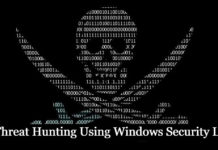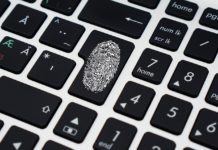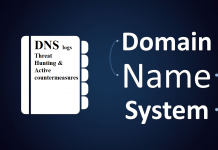Picture this scenario. You’ve just launched your new craft beer line. The bottles look perfect on the shelf in the store. Three days later, a customer complained that your label had peeled off thoroughly after sitting in an ice bucket for twenty minutes.
Water-resistant stickers could have prevented this disaster entirely. These specialised labels maintain their appearance and adhesion even when exposed to moisture, condensation, and humidity. Your brand will stay professional while competitors’ labels fail.
Regular paper labels weren’t designed for Sydney’s challenging conditions. Humidity levels here regularly exceed 70%. Your products face steam in bathrooms, condensation on bottles, and splashes in kitchens.
Why ordinary labels fail so quickly
Paper absorbs moisture naturally. The fibres expand and contract as humidity changes. This movement weakens the bond between the label and surface of the product.
Standard adhesives dissolve when they become wet. Water seeps under the edges first, then spreads across the entire label. Within hours, you have curling corners and illegible text.
The printing process makes things worse. Water-based inks run when exposed to moisture. Oil-based inks resist water better but still smudge on wet paper.
Think about your bathroom products. Shampoo bottles get wet from hands grabbing them daily. Steam from hot showers creates constant moisture exposure. Paper labels start degrading immediately.
Understanding synthetic label materials
Polypropylene forms the backbone of most quality water-resistant labels. This synthetic polymer creates an impermeable barrier against moisture infiltration.
The manufacturing process bonds multiple layers together. A printable surface sits on top, followed by the core material, then a specialised adhesive layer.
Vinyl offers superior durability for extreme conditions. Marine environments, outdoor equipment, and industrial applications benefit from vinyl’s enhanced chemical resistance.
Explicit materials provide unique design opportunities. Your product shows through while maintaining complete moisture protection. Premium cosmetic brands favour this approach for elegant aesthetics.
Real performance in Sydney conditions
We tested various label types in authentic Sydney scenarios. The results highlight why material choice matters so much to get the ideal labels.
Paper labels placed on bottles in refrigerated display cases failed within six hours. Condensation caused immediate edge lifting and ink bleeding.
Synthetic alternatives showed zero degradation after two weeks of identical treatment. Text remained sharp, colours stayed vibrant, and edges maintained perfect adhesion.
Coffee shops demonstrate this difference daily. Iced beverages create heavy condensation that destroys paper labels instantly. Customers can’t identify drink contents or read ingredient information.
One local brewery switched to synthetic materials after losing a significant distribution deal. Their original paper labels created such poor shelf presentation that retailers refused to stock the products.
Choosing appropriate adhesive systems
Permanent adhesives work for most commercial applications. These create bonds that strengthen over time and resist moisture penetration completely.
Removable options suit temporary labelling needs. Customers can remove these labels cleanly without residue, which is perfect for reusable containers or gift items.
Temperature affects adhesive performance significantly. Cold surfaces prevent proper bonding initially. Allow products to reach room temperature before application when possible.
Surface texture influences adhesion, too. Smooth glass and plastic provide ideal bonding conditions. Textured surfaces may require specialised adhesive formulations for optimal results.
Design considerations for moisture resistance
Synthetic materials accept ink differently from paper. You can achieve higher colour saturation and sharper detail with proper printing techniques.
Surface treatments affect both appearance and performance. Matte finishes reduce glare and provide premium tactile experiences. Glossy surfaces make colours more vibrant and simplify cleaning.
White ink capabilities expand design possibilities dramatically. Print white text or graphics on transparent substrates for unique visual effects impossible with paper materials.
Edge sealing becomes crucial for maximum moisture protection. Proper die-cutting techniques prevent water entry points that could compromise label integrity.
Cost analysis and business impact
Water resistant materials typically cost 25-35% more than standard paper alternatives. This premium disappears quickly when you calculate total ownership costs.
Failed labels require product relabelling, customer complaint handling, and potential returns processing. These hidden costs often exceed the original material savings multiple times over.
Consider your quality reputation too. Peeling labels suggest poor attention to detail across your entire product line. Customers question whether internal quality matches the external presentation problems they observe.
Sydney’s competitive marketplace demands a consistent professional presentation. Brands using quality materials gain significant advantages over competitors struggling with label failures.
Application best practices
Surface preparation determines long-term adhesion success. Remove all dust, moisture, and residue before label application. Even microscopic contamination can cause eventual failure.
Apply consistent pressure across the entire label surface. Focus particular attention on edges where lifting typically begins first.
Environmental conditions during application matter enormously. Avoid labelling in high humidity conditions when possible. Low temperatures also prevent optimal bonding formation.
Some synthetic materials require curing time to reach maximum adhesion strength. Plan production schedules to accommodate this 24-48-hour bonding period.
Industry-specific requirements
Food and beverage products face unique moisture challenges. Refrigerated storage creates constant condensation exposure. Kitchen environments add steam and splash risks.
Beauty and personal care items need labels that survive bathroom humidity and direct water contact. Shower products particularly benefit from synthetic material durability.
Chemical and industrial applications may require additional resistance properties. Consult with specialists about enhanced formulations for extreme exposure conditions.
Working with professional printers
Not all printing facilities handle synthetic materials competently. Verify their experience with water-resistant substrates before committing to large orders.
Request actual samples printed on your chosen materials. Screen colours appear different on synthetic surfaces compared to paper substrates.
Discuss finishing options that complement moisture resistance properties. Lamination and protective coatings can provide additional durability layers.
Lead times often extend for specialised materials. Factor this into product launch schedules and seasonal planning requirements.
Conclusion
Water-resistant stickers represent essential protection for Sydney businesses that are serious about maintaining professional brand presentation. The modest additional investment prevents costly failures that damage customer relationships and market reputation.
Your products deserve materials that match their quality standards. Every label failure tells customers that attention to detail might be lacking throughout your entire operation.
Innovative businesses recognise that synthetic polymer materials and moisture infiltration protection aren’t optional extras in today’s competitive environment. They’re fundamental requirements for lasting success.
Ready to protect your brand with labels that actually work when conditions get tough?
Chat to our team about selecting the right materials for your specific applications. Request a quote today and discover why leading Sydney brands trust professional water-resistant labelling solutions.



































